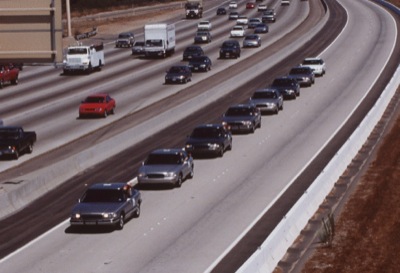Futurists have predicted driverless cars at least since 1940. A consortium including General Motors, CalTrans, and the University of California successfully demonstrated driverless cars on an urban freeway more than a decade ago. Yet here we are, in 2009, with nary a driverless car on the open road.

A successful 1998 driverless car demonstration placed magnets in San Diego freeway lanes. By sensing the magnets and other cars, the eight cars shown were able to drive together or individually pass one another without any problems. Some states have installed road magnets to guide snow plows on short segments of mountain roads, and UC Berkeley put magnets in one street for a driverless bus, but research in this mode has nearly stopped.
Driverless cars offer huge potential benefits over driver-operated cars. Congestion would become a thing of the past because roadway capacities would at least quadruple. Highways would be much safer and traffic could safely move at higher speeds in many places. Driverless cars would save energy, initially because they would be programmed to minimize fuel consumption and later because cars could be lighter weight because accidents would be so rare.







